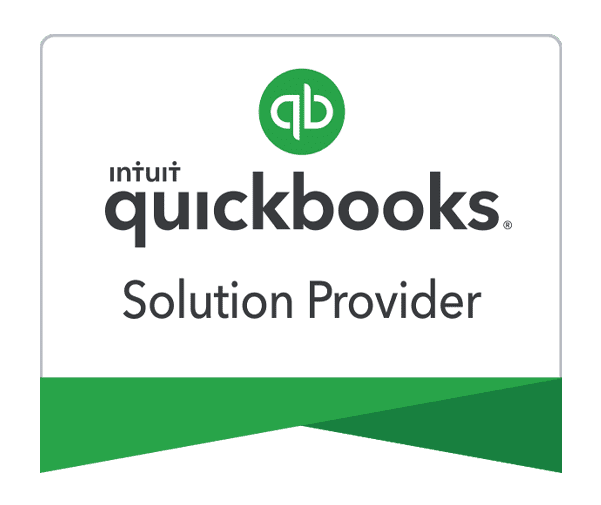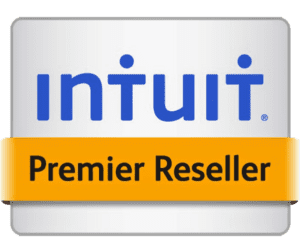Just register for the free trial below and we will send you everything you need to evaluate QuickBooks Online including 30-day access, the full 76-page QuickBooks Online Guide (details everything that you can do in the software) plus the video training library. Free end-to-end consultation and support are included so if you need any help along the way, just let us know!

Paygration, Inc.
The chart of accounts in QuickBooks Online serves as the backbone of financial reporting and tracking. When businesses fully understand its purpose, structure, and customization options, they can optimize the chart of accounts to suit their specific needs and gain valuable insights into their financial health.
In this article, we’ll explain the chart of accounts in QuickBooks and discuss its purpose, structure, and best practices for using them.
Chart of Accounts Overview
The Chart of Accounts is a comprehensive list of all the accounts used to record financial transactions and classify them into specific categories in QuickBooks. It allows QuickBooks Online users to categorize transactions into different types, such as assets, liabilities, equity, income, and expenses, providing a clear overview of the financial health of their business.
If you would like to try the full version of QuickBooks Online Advanced, click here to get a free 30-day no-commitment trial plus access to the full video training library.
The Chart of Accounts in QuickBooks is typically comprised of five main account types:
- Assets: These are resources owned by the business, such as cash, accounts receivable, inventory, and equipment.
- Liabilities: Liabilities represent debts and obligations of the business, including accounts payable, loans, and credit card balances.
- Equity: Equity accounts represent the owner’s investment in the business and the retained earnings.
- Income: Income accounts track the revenue generated by the business from sales, services, or other sources.
- Expenses: Expense accounts record the costs incurred in the normal course of business operations, such as utilities, rent, salaries, and advertising expenses.
To help you better understand the chart of accounts, let’s use a sample scenario. Let’s say you are a small retail business selling clothing. Here are sample income and expense accounts that you can set up in the chart of accounts:
Income:
- Sales: Records revenue from the sale of clothing items.
- Sales Returns and Allowances: Tracks any returned or refunded clothing items.
- Discounts: Records any discounts provided to customers.
Expenses:
- Cost of Goods Sold: Represents the direct costs associated with purchasing or producing the clothing items.
- Rent: Includes rental expenses for the store premises.
- Utilities: Tracks expenses for utilities such as electricity, water, and internet.
- Salaries and Wages: Records payments to employees for their work in the business.
- Advertising and Marketing: Includes expenses related to marketing campaigns, advertisements, or promotions.
- Office Supplies: Tracks the cost of supplies used in the office or store.
- Insurance: Includes expenses for business insurance coverage.
- Repairs and Maintenance: Records expenses for repairs or maintenance of equipment or the store premises.
Best Practices for Using the Chart of Accounts
- Maintain consistency in account naming conventions and numbering systems. For example, if you have an account for tracking office supplies expenses, you can name it “Office Supplies” consistently across all your records.
- Perform regular review and cleanup: Remove any redundant or obsolete accounts that are no longer in use. This practice helps keep the Chart of Accounts streamlined, avoids confusion, and ensures that the financial data remains organized and up to date.
- Organize accounts in a logical and intuitive manner. Group related accounts together based on their function or purpose. For example, group all expense accounts under a broad “Expenses” category and further subcategorize them as needed. Consider the order of accounts within each category, aligning it with the financial reporting requirements of your business.
- Customize based on your business needs: While it’s helpful to follow industry-standard accounts, don’t be afraid to add or modify accounts to suit your unique requirements. This will make reporting and analysis more meaningful and relevant to your business.
- Use detailed account descriptions: Detailed descriptions provide additional context and clarification for the purpose or usage of the account. This can be particularly helpful when multiple users are involved or when reviewing historical data. For example, an account named “Office Supplies Expense” can have a description that specifies the types of office supplies included or any specific policies or guidelines related to the account.
How to Set up the Chart of Accounts in QuickBooks
First, navigate to the Chart of Accounts by selecting the gear icon and clicking Chart of Accounts under Your Company. The chart of accounts shows the list of all the accounts you have in QuickBooks, including default accounts like the ones mentioned above. To add a new account, click the green New button.
Preparing to create a new chart of accounts in QuickBooks Online
Next, complete the New account setup form by providing the required details, such as the account type and account name. Once done, click the green Save button.
Creating a new chart of accounts in QuickBooks Online
If you want to learn more about how to set up and use the chart of accounts in QuickBooks, watch the video below.
The Chart of Accounts in QuickBooks Online is a crucial tool for organizing and reporting financial information. It provides a structured framework for classifying transactions and categorizing accounts, enabling businesses to track their financial activities, generate accurate reports, and gain valuable insights into their financial health.
- how to set up your chart of accounts in quickbooks onlinekey features in quickbooks online advancedquickbooks onlinequickbooks online advancedquickbooks online advanced automationquickbooks online advanced custom workflowquickbooks online advanced workflowsQuickBooks Online chart of accountsquickbooks online invoicingtop features of quickbooks online advanced
















